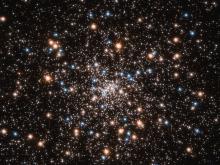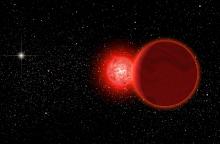Listen to today's episode of StarDate on the web the same day it airs in high-quality streaming audio without any extra ads or announcements. Choose a $8 one-month pass, or listen every day for a year for just $30.
You are here
Ancient Star
When you look at a star, you’re looking back in time. The star HD 140283, for example, is 190 light-years away, so we see the star as it looked 190 years ago.
But the star itself allows us to see much farther back in time — to the very early universe. That’s because the star is one of the oldest ever seen.
Astronomers used several lines of evidence to determine that age. Hubble Space Telescope measured the star’s distance, which revealed its true brightness. That was combined with measurements of its temperature and composition. Plugging those numbers into models of how stars work yields an age of about 14.5 billion years.
That’s older than the universe. But uncertainties in the numbers provide some wiggle room. So the star probably formed just a few hundred million years after the Big Bang.
The key measurement is composition. The star contains only tiny amounts of elements heavier than hydrogen and helium, which were forged in the Big Bang. Almost everything else was created inside stars. As the stars died, the heavier elements were expelled into space, where they could be incorporated into new stars. Since HD 140283 has some of these elements, it’s not from the first generation of stars. But it has so little of them that it’s probably a member of the second generation — born more than 13 billion years ago.
This ancient star is in Libra, which is in the south at nightfall. The star is visible through binoculars.






